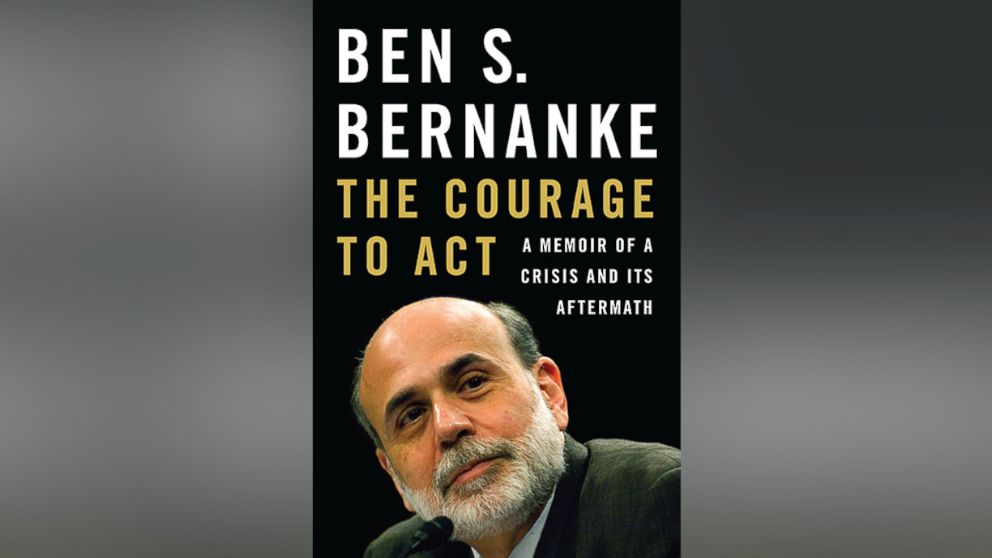Excerpt: Ben Bernanke's 'The Courage to Act'

— -- Excerpted from The Courage to Act: A Memoir of A Crisis and Its Aftermath by Ben S. Bernanke. Copyright © 2015 by Ben S. Bernanke. With permission of the publisher, W. W. Norton & Company, Inc. All rights reserved.
Prologue:
I Can Still Stop This . . .
It was 8:00 p.m. Tuesday, September 16, 2008. I was exhausted, mentally and emotionally drained, but I could not sit. Through the windows of my office in the Federal Reserve’s Eccles Building, I could see the lights of the traffic on Constitution Avenue and the shadowy outlines of American elms lining the National Mall. Dozens of staff members remained at work, but the corridor immediately outside my door was hushed and empty. Michelle Smith, the head of our communications office and my chief of staff, sat quietly, the only other person in the room. She was waiting for me to say something.
Four hours earlier, Treasury secretary Hank Paulson and I had sat side by side in tan leather armchairs in the windowless Roosevelt Room of the White House, steps from the Oval Office. A portrait of Teddy Roosevelt as Rough Rider on a rearing horse hung above a fireplace. Facing Hank and me across the room’s polished wood table sat the current occupant of the White House, a somber George W. Bush, with Vice President Dick Cheney at his side. The president’s advisers, Hank’s senior aides, and representatives of other financial regulatory agencies filled the remaining dozen seats around the table.
Usually, the president liked to keep things light at meetings, by opening with a wisecrack or good-naturedly teasing a close adviser. Not that afternoon. He asked bluntly, “How did we get to this point?”
The question was rhetorical. We had been fighting an out-of-control financial crisis for more than a year. In March, the Fed had lent $30 billion to help JPMorgan Chase save the Wall Street investment bank Bear Stearns from failure. In early September, the Bush administration had taken over Fannie Mae and Freddie Mac to prevent the collapse of the two companies responsible for financing roughly half of all residential mortgages in the United States. And just the day before, at 1:45 a.m., Lehman Brothers—the nation’s fourth-largest investment bank—had filed for bankruptcy, following a frantic and ultimately futile search for a merger partner led by Hank and New York Fed president Tim Geithner.
Now I found myself explaining to the president why the Federal Reserve was planning to lend $85 billion to American International Group (AIG), the world’s largest insurance company. The company had gambled recklessly, using exotic financial instruments to insure securities backed by subprime mortgages. Now that those mortgages were going bad at record rates, the financial firms that had bought the insurance, together with other AIG counterparties, were demanding payment. Without the cash, AIG would go bankrupt within days, perhaps hours. We weren’t motivated by any desire to help AIG, its employees, or its shareholders, I told the president. Rather, we didn’t think that the financial system—and, more importantly, the economy—could withstand its bankruptcy.




